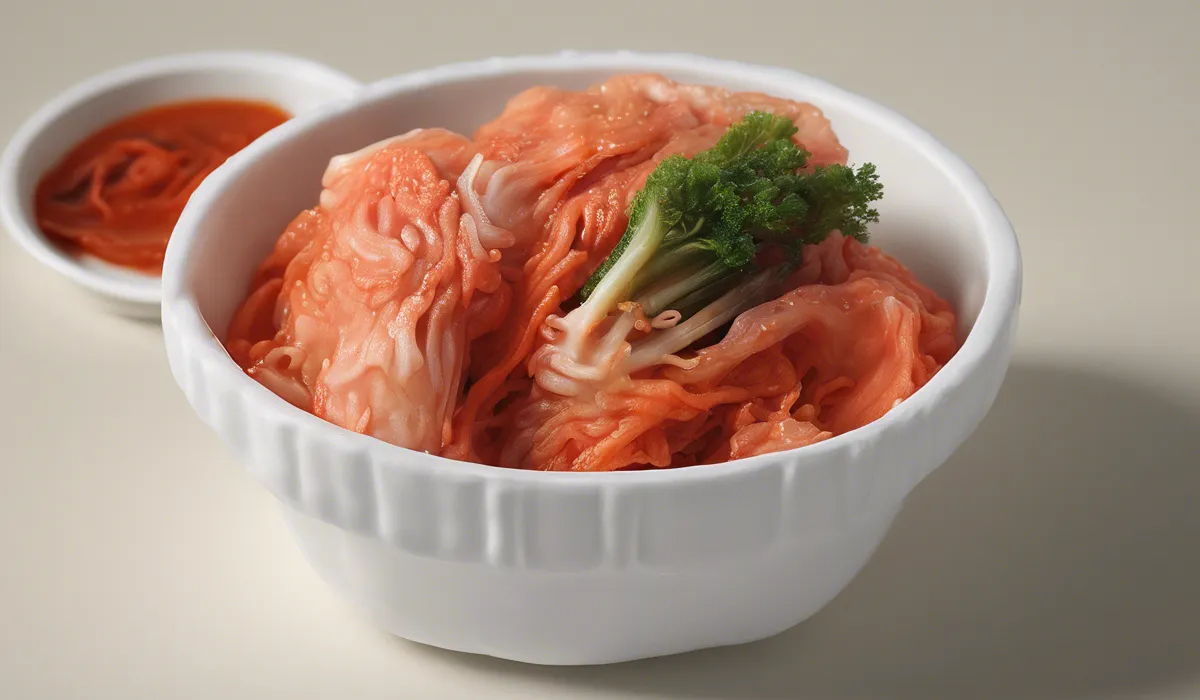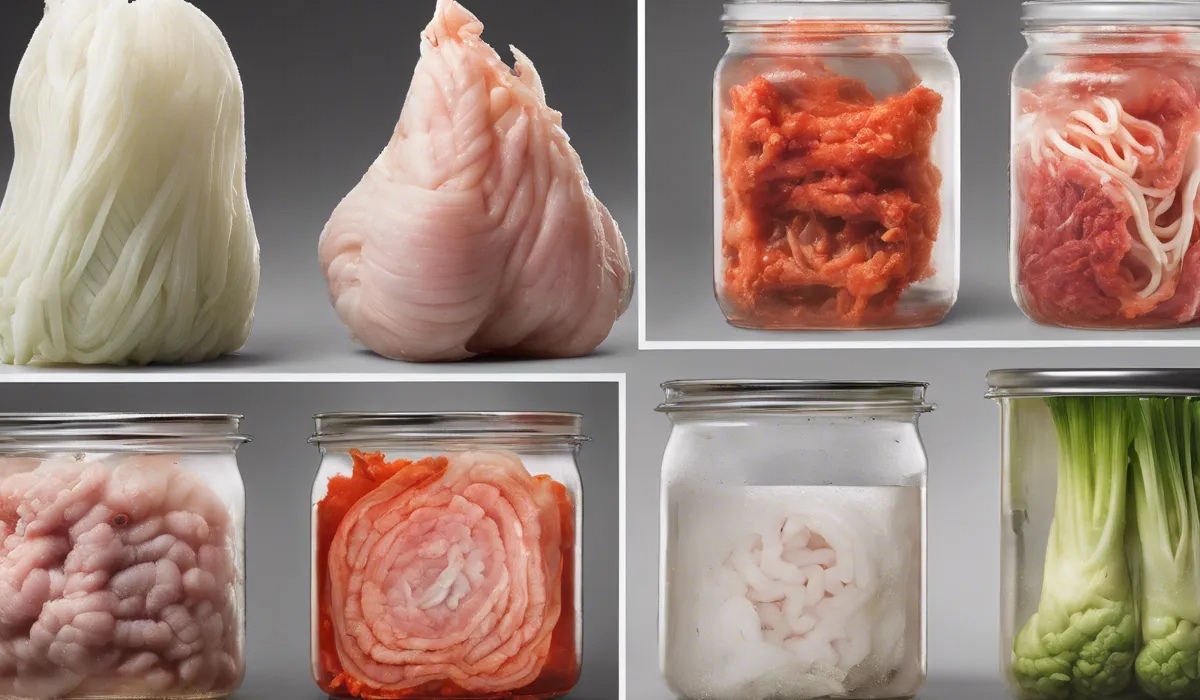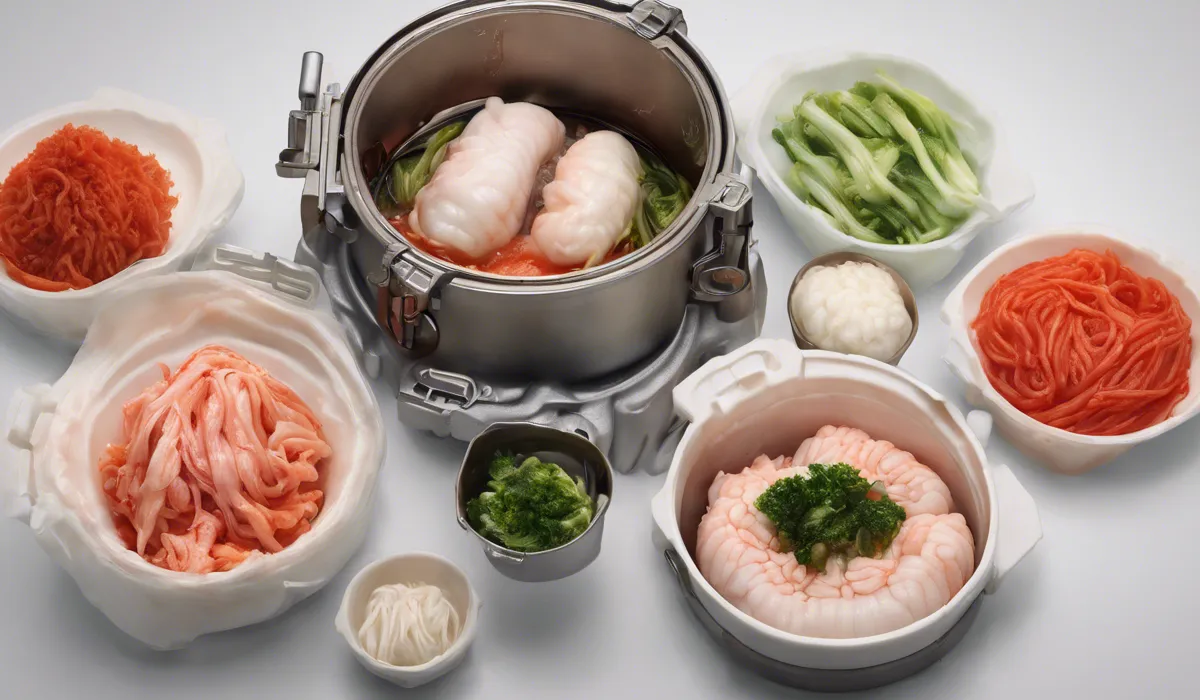Kimchi may mold due to insufficient salting, contamination from unsterilized equipment, or overexposure to air. Ensure all utensils are clean, the cabbage is well salted, and the kimchi is kept submerged under its juices during fermentation.
Causes of Mold in Kimchi

Improper Sterilization of Containers
When making kimchi, the cleanliness of your containers cannot be overstated. Containers that have not been properly sterilized can introduce unwanted bacteria and fungi. These contaminants can outcompete the beneficial bacteria, leading to mold growth.
To avoid this, it is essential to use containers that have been thoroughly cleaned and sterilized. This means washing with hot, soapy water, then boiling or using a sterilizing solution.
Cross-Contamination
Another common culprit is cross-contamination. This can happen when using utensils that have touched other foods or surfaces that harbor mold spores.
It is especially risky when the utensils are used between different stages of preparation without being cleaned.
Make sure to use separate, clean utensils for each step, or wash them thoroughly before reuse.
Incorrect Salt Concentration
The right salt concentration is critical in kimchi making. It helps to keep bad bacteria at bay while allowing the good bacteria to thrive.
Too little salt can fail to inhibit the growth of mold. On the other hand, too much salt can kill the beneficial bacteria, leading to a lack of proper fermentation and potential mold growth.
Insufficient Submergence in Brine
Vegetables in kimchi need to be fully submerged under the brine to create an anaerobic environment where mold cannot grow.
If parts of the vegetables are exposed to air, mold can start to form on these surfaces. It’s crucial to pack the kimchi tightly in its container and press down to ensure all pieces are covered by the brine.
Ambient Temperature and Humidity
The environment where kimchi ferments can greatly influence mold growth. High temperatures and humidity can encourage mold spores to thrive.
Ideally, kimchi should be fermented in a cool, dry place. If the surrounding environment is too warm or moist, consider finding a better spot or using a climate-controlled room.
Length of Fermentation
Leaving kimchi to ferment for too long at room temperature can also lead to mold development.
While some fermenting time is necessary for flavor development, too much time can give mold a chance to grow.
It is important to monitor the kimchi and move it to cold storage at the appropriate time.
Prevention Strategies for Mold-Free Kimchi

Thorough Cleaning and Sterilization of Jars and Utensils
Begin by ensuring all jars and utensils are free of contaminants. Use hot water and soap to clean them, followed by boiling or a chemical solution to sterilize.
Let them dry completely before use. This step is crucial in preventing the introduction of mold spores into your kimchi.
Proper Washing and Prepping of Ingredients
Before starting the kimchi-making process, thoroughly wash all ingredients. Dirt and residual pesticides can harbor harmful microorganisms that could spoil the kimchi.
Clean the vegetables under running water and consider using a vegetable brush for a more thorough clean.
Optimal Salt-to-Water Ratio
Getting the salt-to-water ratio right is a balancing act. The salt concentration needs to be high enough to prevent mold but not so high that it kills the beneficial bacteria.
A general guideline is to use about 2-5% salt by weight, but this can vary depending on the recipe.
Ensuring Complete Submersion of Vegetables
After placing the kimchi in the container, press down firmly to release any trapped air bubbles and ensure all the vegetables are submerged.
Some people use a weight to keep the vegetables under the brine. Check regularly to make sure that the vegetables remain submerged throughout the fermentation process.
Fermentation Environment Control
Controlling the environment where kimchi ferments can prevent mold growth. Keep the fermenting kimchi in a space that is cool and dry.
Basements or cellars can be ideal locations. If these are not available, consider using a temperature-controlled appliance to maintain optimal conditions.
Timely Transfer to Cold Storage
Once the initial fermentation period is over, transferring the kimchi to the refrigerator or another form of cold storage is essential.
This slows down the fermentation process and greatly reduces the risk of mold growth. Keeping kimchi cold ensures its longevity and flavor development.
Dealing with Mold in Kimchi

Identifying Edible vs. Inedible Mold
Not all molds are created equal. Some types of white mold on the surface might be harmless, while others can be toxic. It’s important to recognize the difference.
If the mold is fuzzy and colored (like green, black, or orange), it is likely harmful and the kimchi should not be consumed.
Salvaging Unaffected Portions
If mold is found only on the surface and the rest of the kimchi smells and looks fine, it might be possible to remove the affected area and save the rest.
However, take care to ensure that the mold has not spread throughout the kimchi, as this could pose a health risk.
Disposing of Contaminated Kimchi
If there is a significant amount of mold or if the mold has penetrated deep into the kimchi, it is safest to dispose of the entire batch.
Wrap it well to prevent the spread of mold spores and throw it away. Do not compost moldy kimchi as the spores can contaminate your compost pile.
Cleaning Containers After Mold Growth
After disposing of moldy kimchi, it is imperative to thoroughly clean and sterilize the container before using it again.
Scrub the container with soap and hot water, then sterilize with boiling water or a sanitizing solution to kill any remaining mold spores.
Adjustments for Future Batches
Learning from moldy kimchi can prevent future occurrences. Review each step of your process to identify where contamination may have occurred.
Increase the salt concentration, improve sterilization methods, or adjust the fermentation environment.
By making these adjustments, you can increase your chances of creating delicious, mold-free kimchi in your next batch.
FAQs About Kimchi Mold
Why did my kimchi mold even though I followed the recipe?
Kimchi may mold if the salting process was not thorough enough or if there was contamination from unsterilized equipment. Make sure to use clean utensils and salt the cabbage adequately.
Can I prevent my kimchi from molding if it’s already started fermenting?
To prevent further molding, ensure the kimchi is fully submerged in its juices and store it in a clean, air-tight container to limit air exposure.
Is it safe to eat the non-moldy parts of my kimchi?
It is generally not recommended to eat parts of the kimchi that were in contact with mold. Mold can produce toxins that may not be safe to consume.
What is the best way to store kimchi to avoid molding?
Store kimchi in a clean, airtight container and keep it submerged under its juices in the refrigerator to minimize air exposure and prevent molding.
How do I know if my kimchi has molded?
Mold on kimchi usually appears as unusual spots or fuzz in colors like white, green, or black. Any off-putting smell or taste is also an indicator of mold.
Final Thoughts
Kimchi can mold if not prepared with proper salting, or if it comes into contact with contaminated equipment.
It’s crucial to maintain cleanliness, ensure adequate salting, and keep the kimchi submerged in its juices to prevent overexposure to air, which can also lead to mold growth during the fermentation process.
